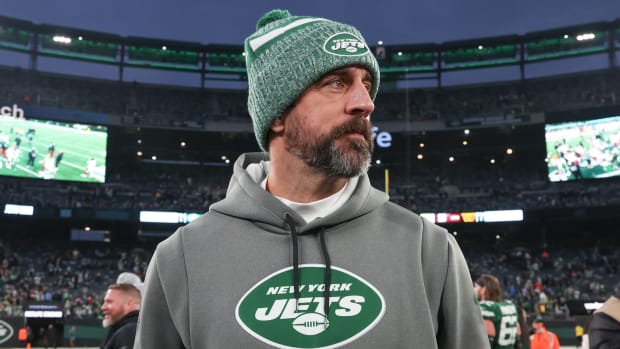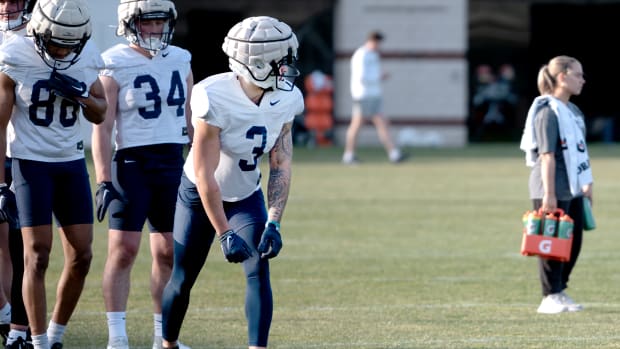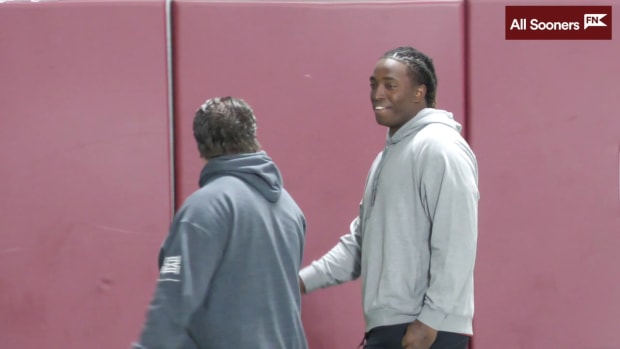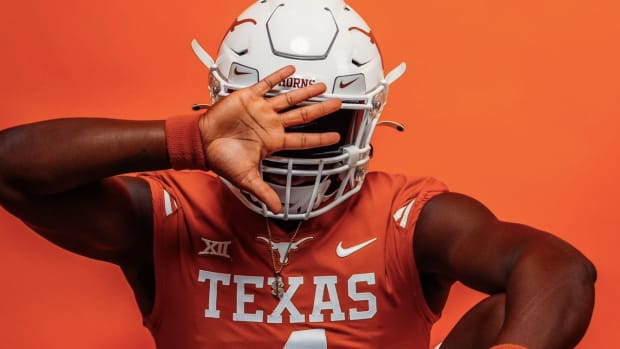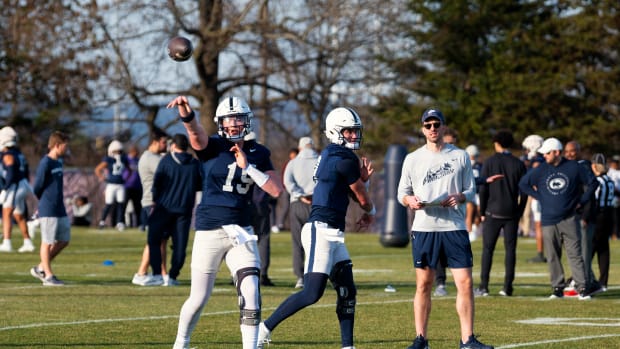UConn's Football Failures Are Catching Up to It, and the School Has Itself to Blame
According to media reports, the University of Connecticut is laying the groundwork to eliminate multiple sports next month. Like every university, it is facing a daunting balance sheet due to the COVID-19 pandemic, but the athletic department specifically has been hemorrhaging money for years, running a deficit in excess of $40 million last year. Athletic director David Benedict sent up a warning flare last week about cutting sports: “I think that’s going to be a decision that we have to make,” he told the Hartford Courant.
How bad could it get at UConn? Courant columnist Michael Anthony urged the Huskies to drop eight sports, going from 24 to the NCAA Division I FBS minimum of 16. A 24-team department is larger than most, but whacking one-third of it would rival the biggest bloodlettings in collegiate sports history.
Whatever the number of cut sports turns out to be, here’s what Benedict needs to say to the athletes he is kneecapping at an already traumatic time in their lives: “As a university, and an athletic department, we utterly failed. As the athletic director, I utterly failed. And so did the ADs who preceded me. And you young people are going to take the fall for it.”
Benedict and his predecessors, and everyone in a decison-making capacity at UConn, has perpetrated breathtaking administrative malpractice when it comes to football. They have screwed up in every way imaginable for damn near a decade. They have made terrible hires, agreed to preposterous contracts and frittered away what little cachet UConn football ever had.
And even when coming to their senses and making a basketball-first decision to switch conferences from the American Athletic back to their Big East roots, they have been too egotistical to take the corresponding step of dropping football back down to where it was two decades ago, the FCS level.
After thoroughly botching the one sport an athletic department cannot afford to botch, UConn is now going to make a bunch of athletes and coaches from non-revenue sports pay for their manifold mistakes. What a racket.
Nothing signifies the ineptitude of the Huskies better than the contract of current football coach Randy Edsall, which is laden with the dumbest set of bonuses in athletic history. Benedict has padded retread Edsall’s wallet with tens of thousands of dollars for doing useless things like scoring first in a game ($2,000), having a better red zone scoring percentage than his opponent (another two grand) or leading at halftime (also $2k). Edsall has pulled in more than $200,000 in bonuses, according to USA Today, while going a robust 6–30 the past three seasons. He also received a $300,000 retention bonus, as if anyone else on the planet had an interest in hiring him away.
In a 2018 season wherein UConn went 1–11 and broke NCAA records for defensive futility, Edsall and his offensive and defensive coordinators received $84,000 in bonuses, according to USA Today. Defensive coordinator Billy Crocker was fired for abundantly clear reasons, but still collected $14,500 in nonsense bonuses.
Benedict also signed off on Edsall's hiring his son, Corey, at age 24 to coach UConn’s tight ends. The state ethics board flagged that as a nepotism arrangement, but allowed the younger Edsall to keep his job. I’m sure the tight end play has been a bright spot during this 6–30 train wreck.
But Edsall 2.0 is only the latest hiring mistake since Edsall 1.0, a plucky tenure that ended with UConn stumbling into the 2010 Fiesta Bowl as the 8–4 champion of the Big East and being trounced by Oklahoma. Edsall left the Huskies high and dry after that season, heading to Maryland, and thus began the Decade of Disaster.
In 2011, then AD Jeff Hathaway hired Paul Pasqualoni to replace Edsall 1.0. That would have been a fine hire in 1998, but not so much 13 years later. The decision was so shaky that program sugar daddy Robert Burton—whose name is on the football facility—publicly ripped the hire.
Pasqualoni had last been a college head coach at 2004 at Syracuse, and left his fastball behind in the ‘90s. Instead of capitalizing on the Fiesta Bowl momentum, UConn squandered it and went 10–18 in two and a half seasons under Pasqualoni. He left four games into his third season, earning $4.8 million in salary and a $750,000 buyout.
Next up was Bob Diaco, former Notre Dame defensive coordinator, hired by then-AD Warde Manuel. Diaco went 2–10 his first season, then rebounded with a 6–7 record that ended with a loss to Marshall in the illustrious St. Petersburg Bowl. New AD Benedict was so smitten by that 6–7 season that he gave Diaco an extension and increased the size of his buyout.
That proved costly when Diaco was canned less than a year later with an 11–26 record, just 6–18 in the AAC. Diaco’s buyout was $3.4 million, and it cost more than $5 million to buy out his entire staff.
That paved the way for the return of Edsall, a tenure that has extinguished UConn as a viable football program and sent a school that once was in the mix to join the ACC limping back to the Big East. The Huskies will try to give it a go as an FBS independent for now, an existence that is preferable for Notre Dame and maybe Brigham Young and nobody else.
They could drop to FCS and save plenty of money on scholarships, decreasing from 85 players on a full ride to 63. They could regain competitiveness at that level as well. But no, the vanity ride at the FBS level continues.
So when Benedict and the other UConn administrators start reeling off dollar figures for all the money the eliminated sports were costing, someone needs to throw the football numbers back at them: a 30–82 record that includes 16 AAC wins in nine seasons; $17.46 million in head coaches’ salary, bonuses and buyouts.
When you’re paying more than $1 million for each league victory in the AAC over a span of nine seasons, you have blown it.
But really, the financials are even worse than that. In January, the Courant reported that the Huskies made $3.3 million in revenue and spent $16.6 million in 2019. No other UConn sport came anywhere close to losing that much money.
The attempt at big-time football never made sense at UConn to begin with. The recruiting footprint is small and shallow. The home stadium is in Hartford, 30 miles from the Storrs campus, a lousy arrangement. The demise of the Big East left the Huskies as the northernmost outpost in the geographically absurd AAC.
But UConn kept throwing money at the problems, kept clinging to the ego trip. Even as the school was moving back to the Big East and essentially bailing on football, there were splashy announcements last summer touting a revamped weight room and new locker room.
The insulting bonuses. The buyout money. The facility arms race. Instead of throwing that money into the failed venture of big-time football, it could keep alive some other UConn sports. But it’s already been wasted.
And when it comes time to announce the cuts that now seem inevitable, the school’s administrators should start by blaming themselves for being in this sorry situation.

